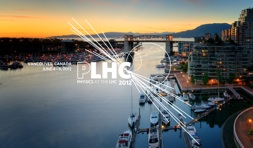Speaker
William Robert Spearman
(Harvard University (US))
Description
In 2012 the LHC will be operated in a mode leading to up to 40 inelastic pp collisions per bunch crossing, so-called "pile-up". The reconstruction and identification of muons produced in a hard collisions is difficult in this challenging environment. Di-muon decays of J/psi mesons and Z bosons have been used to study the muon reconstruction and identification efficiency of the ATLAS detector as a function of the muon transverse momentum from p_T =4 GeV to p_T = 100 GeV and the number of inelastic collisions per event. The results show a steep efficiency turn-on curve reaching its plateau value of 100% at p_T approx 6 GeV and no dependence of the muon reconstruction efficiency on the amount pile-up. The studies also reveal that the use of inner detector tracks allows us to distinguish between isolated muons and non-isolated muons produced in jets with high separation power even at the highest pile-up levels.
<strong>Collaboration Name</strong><br /><font color="#000099">Please enter the name of<br />the collaboration or group<br />using the acronym, as in:<br /><font color="#ff0000">ABC Collaboration</font>
ATLAS Collaboration
| <strong>E-mail Address</strong> | william.robert.spearman@cern.ch |
|---|
Author
William Robert Spearman
(Harvard University (US))
